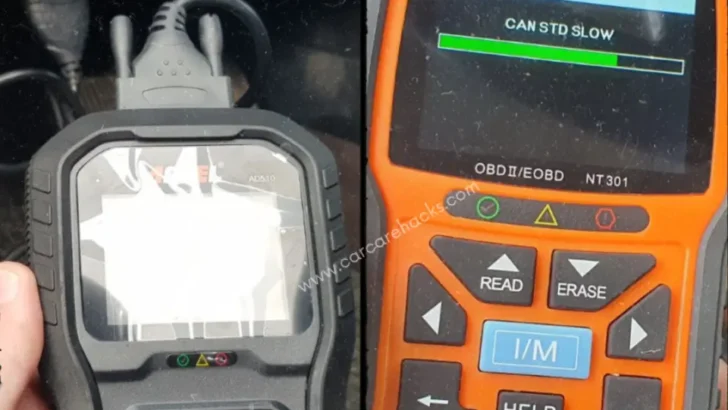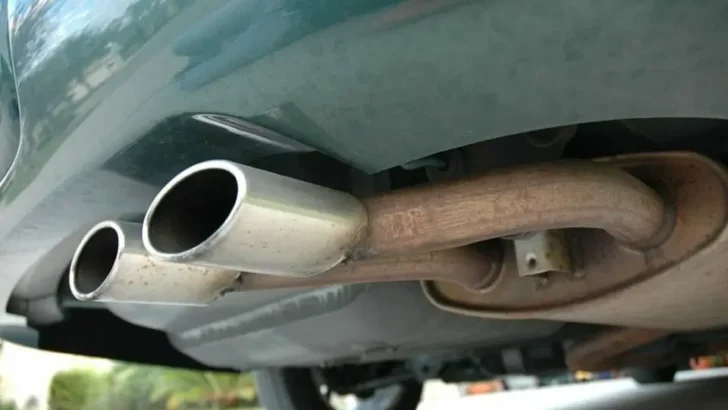If you’re a vehicle owner, you know that warning lights on your dashboard can be both alarming and confusing. One such code that might pop up is the P2047 code, which indicates an issue with the reductant injector circuit.
Let’s dive into what this code really means, its symptoms, causes, and how to address it effectively!
Key Takeaway
The P2047 code signifies a problem with the reductant injector circuit being open. This can lead to reduced engine performance and increased emissions.
Recognizing this code early is vital for maintaining your vehicle’s efficiency. Ignoring it may result in more complex issues down the line.
Understanding how to diagnose and fix this problem can save you both time and money. It’s important for car owners to be proactive rather than reactive when it comes to their vehicles.
Stay informed about your vehicle’s systems, especially those related to emissions. Addressing codes like P2047 promptly ensures compliance with environmental standards while keeping your engine running smoothly.
What does the P2047 code mean?
The P2047 code signifies an issue with the reductant injector circuit in your vehicle. This code typically points to a malfunction within the selective catalytic reduction (SCR) system. The SCR system plays a crucial role in reducing harmful emissions by injecting diesel exhaust fluid (DEF) into the exhaust stream.
When this error code is triggered, it indicates that there’s an open circuit somewhere along the path of the reductant injector. This can disrupt its ability to inject DEF properly, leading to increased emissions and potential engine performance issues.
Understanding this code is essential for any driver dealing with diesel engines. Addressing it promptly ensures compliance with emission standards and helps maintain optimal vehicle operation.
What are the common symptoms of a P2047 code?
When the P2047 code triggers, your vehicle may exhibit some telling signs. One of the most common symptoms is a noticeable drop in engine performance. You might feel sluggish acceleration or an overall lack of power.
Another frequent indicator is the illumination of the check engine light on your dashboard. This warning can be alarming and often prompts drivers to seek immediate attention.
Additionally, you may experience increased fuel consumption. If you notice you’re filling up more often than usual, it could be related to this issue.
Some vehicles might also enter limp mode as a protective measure, limiting engine output to prevent further damage.
Unusual smells or emissions from the exhaust can signal that something isn’t functioning correctly within your emission control system. Awareness of these symptoms can help address issues before they escalate.
What causes a P2047 code?
Several factors can trigger a P2047 code. A common culprit is an open circuit in the reductant injector system. This disruption prevents the proper operation of the injector, leading to performance issues.
Another cause could be damaged wiring or connectors related to the reductant injection system. Corrosion or fraying wires often lead to poor connections and signal interruptions.
Additionally, a malfunctioning engine control module (ECM) might falsely report this issue. If the ECM misreads data from sensors, it may trigger error codes that don’t reflect actual problems.
Low levels of diesel exhaust fluid (DEF) can also contribute to triggering this code. When DEF is insufficient, it affects emissions controls and overall vehicle efficiency.
Foreign particles clogging the injector could result in improper flow and communication errors with the vehicle’s systems.
How is a P2047 code diagnosed?
Diagnosing a P2047 code requires a systematic approach. Technicians typically start with an OBD-II scanner to confirm the presence of the code and check for any other related codes.
Next, they inspect the reductant injector circuit visually. This involves looking for damaged wires, loose connections, or corroded terminals that might disrupt electrical flow.
After visual checks, multimeter tests are conducted on the injector itself. This helps determine if it’s functioning properly or if there’s an open circuit causing the issue.
Technicians may test drive the vehicle while monitoring live data from sensors to further pinpoint where faults lie in real-time conditions. Each step is crucial in accurately diagnosing this complex problem without unnecessary guesswork.
How do I fix a P2047 – Reductant Injector Circuit Open ?
To fix a P2047 code, start by inspecting the wiring of the reductant injector circuit. Look for any signs of damage or corrosion that could disrupt electrical flow.
Next, check the connector at both ends. Ensure it’s firmly seated and free from debris. A loose connection can lead to an open circuit.
If everything seems intact, test the voltage at the injector using a multimeter. You’re looking for consistent power when the engine is running. If there’s no voltage, follow back through the circuit to identify any breaks or faults.
If you suspect a faulty reductant injector itself, consider replacement. Testing components individually helps pinpoint where problems lie without unnecessary replacements. Always reset your vehicle’s computer after repairs to see if error codes reappear.
How much does it cost to fix a P2047 code?
The cost to fix a P2047 code can vary widely. Factors such as the make and model of your vehicle, labor rates in your area, and parts availability all play significant roles.
On average, repairs may range from $100 to over $1,000. If it’s merely an issue with wiring or connectors, you might only spend around $100 to $300.
However, if the problem lies with more complex components like the reductant injector itself or related systems, costs could escalate significantly.
Always seek quotes from multiple mechanics for a better understanding of actual expenses involved. Remember that diagnosing the issue correctly is crucial; misdiagnosis can lead to unnecessary costs.
Are there any other codes that may be related to a P2047 code?
When dealing with a P2047 code, it’s essential to consider other related trouble codes that might surface :
- P20EE – SCR NOx Catalyst Efficiency Below Threshold
- P2BAE – Reductant Pressure Too Low
- P20E8 – Reductant Pressure Too High
- P2BAF – DEF Consumption Too High
- P2BA3 – Reductant Level Sensor Circuit Range/Performance
Frequently Asked Questions About P2047 – Reductant Injector Circuit Open :
Is it safe to drive with a P2047 code?
Driving with a P2047 code is not recommended. This code indicates an open circuit in the reductant injector, which can hinder your vehicle’s performance and emissions control.
When this issue arises, you may notice reduced engine efficiency. Your car might struggle to accelerate or maintain speed. These symptoms could lead to dangerous driving situations.
Additionally, the check engine light will likely illuminate on your dashboard. Ignoring these warnings can escalate problems down the line, potentially leading to costly repairs.
It’s important to understand that while some drivers may continue operating their vehicles with this code present, it poses risks both for safety and compliance with emission standards. Addressing the problem sooner rather than later ensures smoother operation and peace of mind on the road.
What tools are needed to diagnose a P2047 code?

To diagnose a P2047 code effectively, you’ll need some essential tools. An OBD-II scanner is the primary device for reading trouble codes from your vehicle’s computer. Look for one that offers live data and freeze frame capabilities.
Next, a multimeter comes in handy for checking electrical connections and voltages within the reductant injector circuit. This tool helps you pinpoint any wiring issues or component failures.
A digital pressure gauge can also be useful if you suspect problems with fluid flow through the injector system. It provides real-time readings to help assess performance.
Having basic hand tools like wrenches and screwdrivers will aid in accessing components when needed. Keep these instruments on hand to tackle any diagnostic challenges efficiently.
Can a P2047 code cause a vehicle to fail an emissions test?

A P2047 code can indeed influence the outcome of an emissions test. This diagnostic trouble code indicates an issue with the reductant injector circuit. When this happens, your vehicle’s emissions system may not function properly.
Modern vehicles rely on accurate readings from various sensors to regulate exhaust emissions effectively. If the reductant injector is compromised, it could lead to increased nitrogen oxides (NOx) levels in the exhaust gases.
During testing, if emissions exceed legal limits due to a malfunctioning system related to a P2047 code, your vehicle will likely fail the test. Repairing issues linked to this code before attempting another test is essential for compliance and maintaining environmental standards.
Understanding these implications can save you time and money in repairs or retests down the line. Always address any warning codes promptly for optimal performance and legal adherence.
Can a P2047 code be caused by low DEF fluid?
Yes, a P2047 code can indeed be triggered by low Diesel Exhaust Fluid (DEF) levels. DEF is crucial for reducing harmful emissions in diesel engines, and its absence can lead to various issues.
When the fluid runs low, the system may not operate effectively. This deficiency can cause sensors to detect an improper flow or insufficient amounts of reductant being injected into the exhaust stream.
As a result, you might see warning lights on your dashboard along with performance issues. It’s essential to keep an eye on DEF levels as part of regular vehicle maintenance. Regular checks could help prevent triggering codes like P2047 down the line.
If you encounter this code, start by checking your DEF tank. Refilling it often resolves related error codes and keeps your engine running smoothly without unnecessary complications.
How often should the DEF fluid be topped off to prevent a P2047 code?
Maintaining the correct level of Diesel Exhaust Fluid (DEF) is crucial for optimal vehicle performance. Regular checks can help prevent issues like the P2047 code from appearing.
Typically, DEF should be topped off when it reaches about one-quarter full. This proactive approach ensures you always have enough fluid to support your emissions system effectively.
Driving habits and engine efficiency play a role in how quickly DEF depletes. For vehicles that frequently transport heavy loads or navigate hilly terrain, more frequent monitoring may be necessary.
It’s also wise to check the manufacturer’s guidelines regarding DEF intervals specific to your vehicle model. Adhering to these recommendations will further safeguard against potential problems related to reductant injectors and improve overall fuel economy.
Can a P2047 code be caused by a bad NOx sensor?
A P2047 code may indeed be triggered by a faulty NOx sensor. The NOx sensor plays a crucial role in monitoring nitrogen oxide levels in the exhaust gases, which helps manage emissions and optimize engine performance. If this sensor fails or provides erroneous readings, it can disrupt the reductant injector’s operation, leading to an open circuit condition that results in the P2047 code.
If you suspect your vehicle has a bad NOx sensor causing the P2047 code, it’s advisable to have it diagnosed promptly. Replacing a malfunctioning NOx sensor can help restore proper function to your vehicle’s emissions system and prevent further issues down the line. Regular maintenance checks will ensure that all components related to emission control are functioning correctly, keeping your car running smoothly while reducing its environmental impact.
Can a software update fix a P2047 code?
If you receive a P2047 code, a software update may be able to fix the issue if it was caused by a programming error. However, keep in mind that software updates cannot solve physical problems such as faulty valves or damaged wiring. For an accurate solution, a thorough diagnosis is necessary to identify the root cause of the problem.
Can a P2047 code be caused by using the wrong type of DEF fluid?
Choosing the right type of DEF fluid is crucial for your SCR system’s health. Using non-certified or off-brand solutions, such as agricultural-grade urea, can result in issues and trigger a P2047 code. To prevent these problems, make sure to use only API-certified DEF fluid that meets ISO 22241 specifications.
